12 Lead Generation Strategies That Will Greatly Increase Conversions

I hope you enjoy this blog post. If you want Hello Bar to grow your leads, click here.
Author:
Ryan Bettencourt
Published
July 2, 2024

A number of marketers believe that simply having a great product or service will automatically attract leads and that’s where they usually go wrong!
The reality is that proactive lead generation strategies are essential to consistently generate leads and drive conversions. They may also boost brand awareness that can eventually lead to trust and loyalty.
Whether you’re targeting B2B or B2C sectors, you need several strategies to continuously bring in new prospects. Simply put — without leads, it won’t be easy to grow your business or get a better ROI.
In this guide, we’ll show you how to put 12 proven lead generation strategies to work so you can boost conversions and generate more sales.
Lead Generation Statistics and Curious Facts
If you’re not convinced that lead generation matters, check out a few lead generation statistics that might change your mind:
- Fewer than one quarter of businesses are satisfied with the amount of leads they generate.
- Spending just six hours per week on social media can boost lead generation.
- More than 50 percent of marketers devote at least half their marketing budgets to lead generation.
- Fewer than 20 percent of businesses report getting quality leads from outbound marketing strategies.
- A full 70 percent of marketers report that they’ve made lead generation their top priority.
As you can see, lead generation has become one of the most important parts of growing a healthy business. But how do you do it? Let’s define a few terms, then dive into our 12 proven lead generation strategies.
What Is Lead Generation in Marketing?
Lead generation can be seen as the missing link between marketing and sales. It refers to the process of attracting prospects to your business and increasing their interest through nurturing.
However, not every query is considered a lead. A qualified lead is someone who is both willing and able to buy your product or service.
For instance, if you’re targeting enterprise-level businesses as your customers, you don’t want to attract prospects who own small businesses. They aren’t in your target market.
Generally, there are three types of leads based on where they are in the sales funnel:
- Top of the Funnel Leads: These are at the initial stages of the buying journey. They’re starting to look for a solution to their problems. An example can be someone who just followed your brand on social media.
- Middle of the Funnel Leads: When the people are in the consideration phase, they usually know their problem and are actively searching for and comparing solutions. An example could be a visitor who has signed up for a webinar.
- Bottom of the Funnel Leads: The potential customers are finally at the decision-making stage, ready to make a purchase. They know their options well and are considering you as a solution. An example would be a lead who’s signed up for a free trial.
In marketing, lead generation strategies refer to the act of acquiring information from consumers that can further the relationship between the business and the consumer. A lead can be an email subscriber opt-in, a sales prospect, or a follower on social media.
In fact, you can define a lead however you like. Maybe you’re collecting phone numbers for your outbound sales team, or perhaps you’re trying to grow your email list. Whatever the case, set a goal for acquiring more leads so you know exactly what you’re trying to achieve.
What Is a Lead Generation Strategy?
A lead generation strategy is a systematic approach that businesses craft and apply to acquire prospects and convert them to customers. It involves a series of targeted actions that help you identify your target audience, create a plan to reach out, and finally turn them into customers.
Generally, a lead strategy could refer to customer touchpoints, assets you build for your marketing team, or anything else that helps in generating more leads for your business.
The primary goal of lead generation marketing strategies is to create and improve interactions with leads, guiding them through the sales funnel.
For instance, you might use content promotion to lure in prospects through search engine marketing, then create an enticing, relevant lead magnet to convince them to sign up for your email list.
With the right lead generation marketing strategy, you can create an effective roadmap for reaching your target audience and getting them interested in your products.
The 4 L’s of a Lead Generation Strategy
One of the most effective ways to systematically manage and optimize your lead generation efforts is to understand the L’s — lead capture, lead magnet, landing page optimization, and lead scoring
This approach consists of four critical elements, each playing a vital role in effectively attracting, engaging, and converting potential customers.
Let’s take a detailed look at each element:
Lead Capture
This stage involves collecting information from potential customers who have shown interest in your product or service. The aim is to obtain their contact details and other relevant data to initiate further engagement.
An effective lead capture page involves tools like contact forms on landing pages, strategically timed pop-ups, live chat widgets, or product demos.
Here’s an example of a lead capture campaign. It explains exactly the perks a visitor would receive from entering their email address. This will make them excited to subscribe.

Image via Pinterest
Lead Magnet
Lead magnets are the resources or incentives you offer to your prospects in exchange for their contact information. They attract and capture leads by offering something captivating or useful that addresses their interests and needs.
Examples of lead magnets include discounts or coupons, free trials, free shipping, and webinars.
Lavish Alice is a great example of using a discount code as a lead magnet. People love great deals, and offering discounts is an effective strategy to keep them hooked.
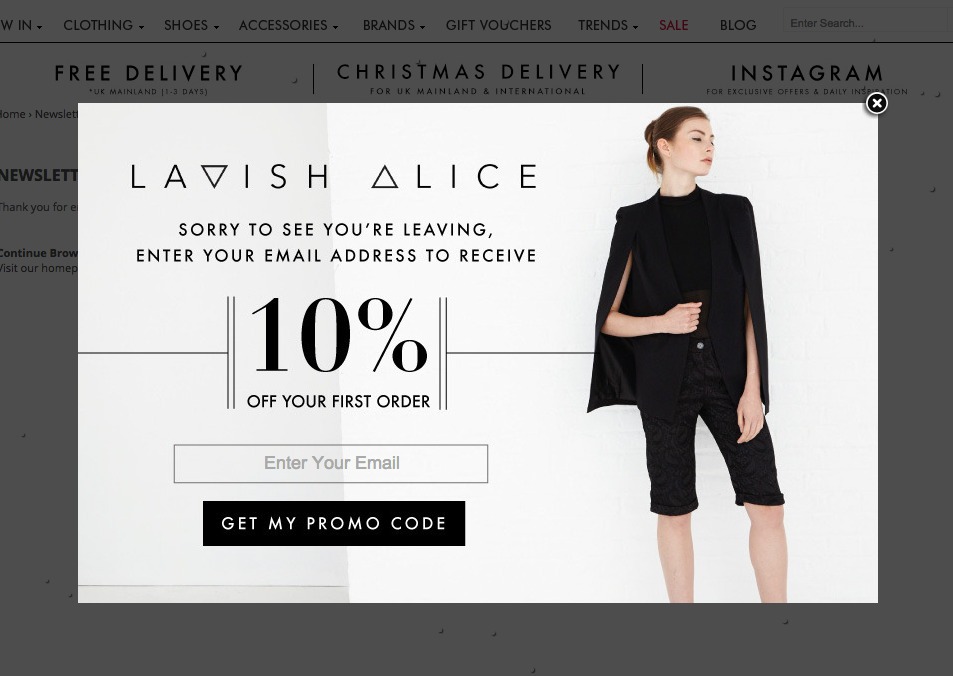
Image via Pinterest
Landing Page Optimization
This component focuses on improving the effectiveness of your landing pages to convert visitors into leads.
A good landing page must serve the dual purpose of warming up your target audience and capturing leads.
Here are the essentials of highly converting landing pages:
- A killer headline that captures attention and sparks curiosity
- High quality images relevant to your products or services
- A compelling copy of what your brand is about
Below is an example of an effective landing page. The use of high-quality product images gives the viewers an idea of what the products would look on them.
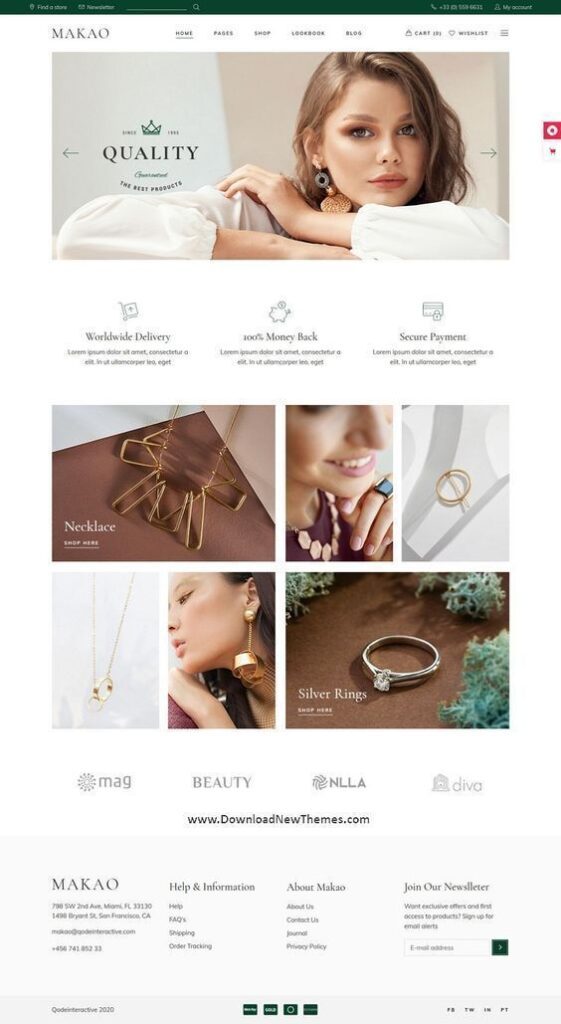
Image via Pinterest
Lead Scoring
This final process involves evaluating and ranking leads based on their likelihood to convert into customers. It helps you prioritize your leads according to their individual profiles and engagement levels.
Ultimately, lead scoring helps you to figure out who is or is not a potential buyer, who is ready to buy, and who is most likely to buy.
It’s done by quantifying the interactions that leads have with your content by assigning points for various engagement types.
Here’s a lead scoring example. Let’s say a customer:
- Downloads an e-book: add 5 points
- Fills out a form: add 7 points
- Unsubscribes from your newsletter: deduct 5 points
- And so on…
12 Lead Generation Strategies for a Successful Business

Now we get to the good stuff!
It’s important to understand what lead generation entails, but it helps if you have a blueprint you can follow to bring in more prospects. Plus, you need to know how to effectively convert them.
That’s what this guide will teach you. We’re going to go through 12 proven strategies that can increase your conversion rates and help you sell more products. Plus, we’ll explain why each strategy works and show you examples to help you visualize how these strategies might work for your business.
1. Use Social Media Lead Generation Strategies
Social media has become an integral part of our daily lives and a vital tool for businesses looking to generate leads.
With billions of active users across various platforms, leveraging social media for lead generation is not just an option; it’s a necessity for any successful business.
So, how do you harness social media for lead generation?
The most important thing is to make sure you’re using your chosen platform socially. What does that mean? Interact with your followers. If they comment on your posts, answer them. If they like your content, thank them.
Increasing engagement on social media almost always correlates to more leads because you’ve shown the human side of your business. Consumers want to buy from companies that are willing to interact with them on a personal level.
Generating leads via Facebook typically involves improving click-through rates, especially to option and landing pages. You need compelling headlines and CTAs. Images and embedded Facebook videos perform well, too.
Focus on getting more Facebook followers and convincing those followers to visit your website. Optimize your Facebook page and profile for your specific audience and give them reasons to convert.
Often, giveaways and contests help boost engagement on Facebook. Invite people to sign up for your email list in exchange for an entry in the event.
Many businesses forget that social media is an extension of their businesses. If you maximize traffic between your website and social media profiles, you’ll get more leads. That’s where Hello Bar comes in, but we’ll show you that trick a little later.
X (formerly Twitter)
Even though X has increased its character count limit, it still restricts your content. Plus, X feeds move rapidly for most users because they follow so many people.
How do you generate leads from X? You give people a compelling reason to click.
Start with your images. I recommend custom graphics if you want to grab your followers’ attention. Startle them out of their scroll so they read the text on your tweet.
You’ll also want to get more followers that will provide you with a larger pool of prospects to convert. Adding click-to-Tweet buttons on your website can help. So can promoting your X account via other social channels.
Since Instagram is owned by Facebook, these two social channels make a perfect pair. You can construct social ads on both platforms via the same page, but you don’t have to pay to play.
Instagram thrives on imagery and live video. The latter offers an awesome way to increase conversions through lead generation.
If you “go live” on Instagram by creating Instagram Stories, you can directly ask your followers to visit your website and sign up for your email list or buy a product. You can even offer an incentive just for the people who watch your Stories, such as a bonus product or a coupon code.
If you’re targeting B2B customers, LinkedIn is probably your best lead generation source in the social sphere. It’s built to help professionals find one another, which means that your target audience probably spends time on the platform.
Publishing content on LinkedIn is an excellent way to round out your lead generation strategies. You can either publish original content or publish excerpts from the content on your blog with a link to click through.
Either way, make sure to include links to landing pages as part of your overall lead generation strategy.
Lots of businesses discount Pinterest as frivolous, but nothing could be further from the truth. While you might not want to pin images of haute couture or delicious recipes (unless you’re selling clothing or kitchen utensils), you can still use this platform to generate leads.
Infographics are among the most high-performing image types on the Internet, and they work great on Pinterest. In fact, there are tons of pages on Pinterest that are dedicated to infographics. That’s why so many marketers include Pinterest in their lead-generation strategies with a growing trend of using infographics created with AI to make it more efficient and scalable.
Growth Collective, a platform for freelance marketers, even has marketers on its platform that are dedicated to lead generation on Pinterest.
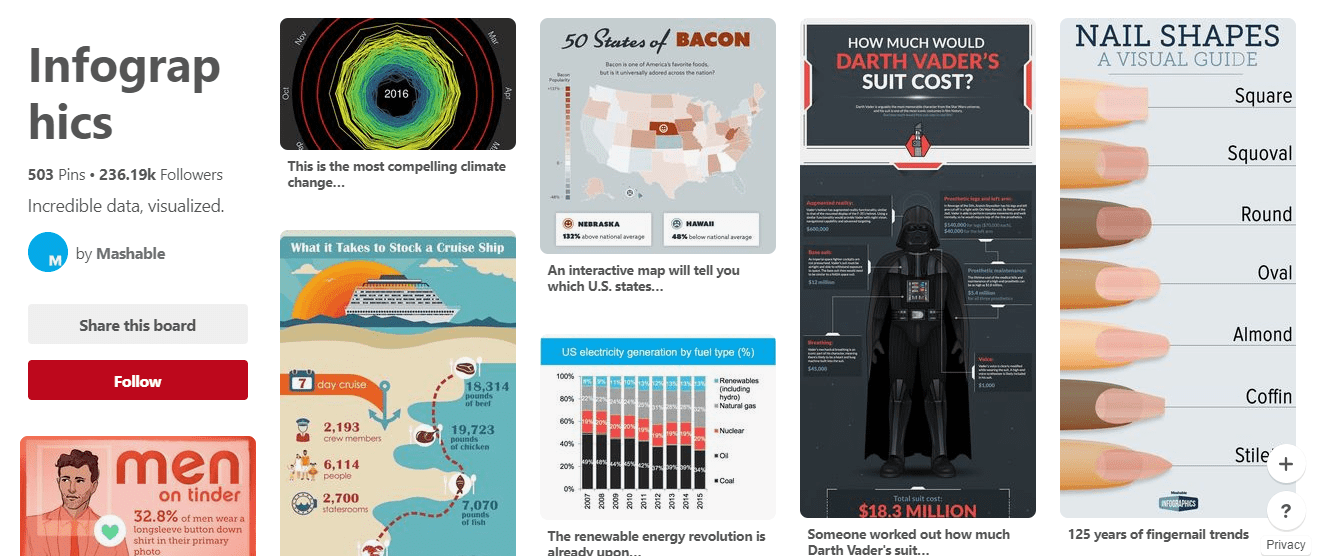
Include your website URL on your infographic so people can easily find the source. Then target those visitors with an enticing offer just for them.
2. Optimize your website for mobile users
If you shop online from your phone more than you actually do offline, what makes you think your potential customers aren’t doing that? In fact, mobile usage has become even more common than laptop.
That’s an opportunity for you if you make sure your website is mobile friendly. In other words, it should render beautifully for users no matter what device they’re on. Otherwise, your lead generation strategies won’t produce the results you want. This is especially true if you have an ecommerce store and are trying to generate ecommerce leads. People like to buy from a website that allows them easy viewing, easy navigation and quick checkouts.
Start by using a responsive web design. That way, text and graphics will automatically conform to the user’s screen size.
Next, make sure the images you use don’t overwhelm the page. You don’t want users to have to slide their fingers all over their screens to read what you’ve written or view an entire image.
Many premium WordPress themes allow you to adjust specific elements based on the screen size. That’s an incredible asset when you want maximum control over how your site looks. You can also adjust specific Hello Bar settings to suit mobile devices.

If you want to maximize lead generation, you can create Hello Bars specifically for mobile users.
3. Use awesome lead magnets in your lead generation process
A lead magnet is a marketing asset that website visitors can download or access for free after performing a desired action, such as signing up for your email list. It’s a key part of most lead generation strategies.
Lead magnets should be so appealing to your target audience that they can’t turn them down. Some lead magnet ideas can be offering an e-book, calculator, template, form, checklist, or anything else you think your prospects might benefit from.
Promote your lead magnet via a Hello Bar. It might look something like this:
![]()
When visitors click on the call-to-action (CTA) button, they’ll arrive at the landing page where you collect email addresses.
Play with different headlines and calls to action to figure out which converts leads best. Hello Bar allows you to run A/B tests on various bars, then automatically provides you with the results.
4. Post more blog content with valuable information to get more leads
Did you know that business owners who blog at least 16 times more month get about 3.5 times more traffic than those who blog less frequently? Make no mistake: More traffic will translate into more leads if you use the tools available to convert those visitors.
Keep in mind that lead generation strategies don’t work unless you have sufficient traffic.
Posting more blog content will make your website more discoverable via search engines and get blog leads. Plus, you can interlink your content so people stay on your website for longer periods of time.
Blogging has the added benefit of establishing yourself and your business as the primary authority in your industry. If you demonstrate your knowledge, people will come to trust you. Consequently, they become more likely to buy from you.
Create an editorial calendar for your blog so you know what posts you’ll publish at least a month in advance. Outline those posts so you don’t feel overwhelmed when you sit down to write, then schedule them to go live ahead of time.
5. Use strong calls to action in your lead generation strategy
I’ve already touched on CTAs, but they deserve special attention. A CTA is a word or phrase that compels visitors to take some sort of next step, such as signing up for your email list, buying a product, or investing in a service.
Lead generation strategies simply won’t work unless you tell your visitor what to do. It’s that simple.
CTAs often work best when you use “I” phrases. For instance, we created a Hello Bar above for a lead magnet.
![]()
What if we changed the CTA?
![]()
Now, I’ve used an “I” phrase, which can help the user feel more comfortable with your website. Conduct an A/B test to see which CTA works best for your audience.
CTA phrases can be long or short. Sometimes, it’s enough to say something like “Download Now” or “Sign Up.” For other audiences, you might need a longer CTA phrase, such as “Sign up for your free trial immediately!”
You can even incorporate a custom QR code using a QR code generator in your CTA for users’ convenience in accessing the next step. Here’s an example.
6. Optimize your website for conversions and get more leads
Conversion rate optimization (CRO) has become just as important as lead generation. Think of these strategies as two sides of the same coin.
CRO involves optimizing every aspect of your website for conversions. You want to give your prospects every opportunity to convert on your offers and become leads or customers.
There are several places to put CTAs on your website:
- On a Hello Bar
- Ends of blog posts
- Sidebars
- Footers
- Within body content
- On landing pages
Go through every page on your site and find at least one place to put a CTA. Just make sure it’s relevant for the page’s content.
To put even more emphasis on your CTA, make it animated. Hello Bar allows you to animate your bar so it attracts more attention.
7. Nurture your leads through email marketing
Email marketing has become a pivotal way for businesses to stay in touch with their prospects, generate more sales, and build stronger communities. Some entrepreneurs even consider their email lists their most valuable assets.
However, email marketing only works when done properly.
First, make sure you’re consistent. If you tell your audience that you’ll email them once per week, send them weekly emails on the same day. If you tell your subscribers that you’ll send coupon codes, make sure they’re included.
Keep your emails as short and engaging as possible. Focus on one topic per email, and optimize the subject line to get people to open your emails.
Most importantly, make sure everyone can read your messages. Include an HTML option for people who don’t load graphics in their emails.
8. Consider applying lead scoring to your lead strategy
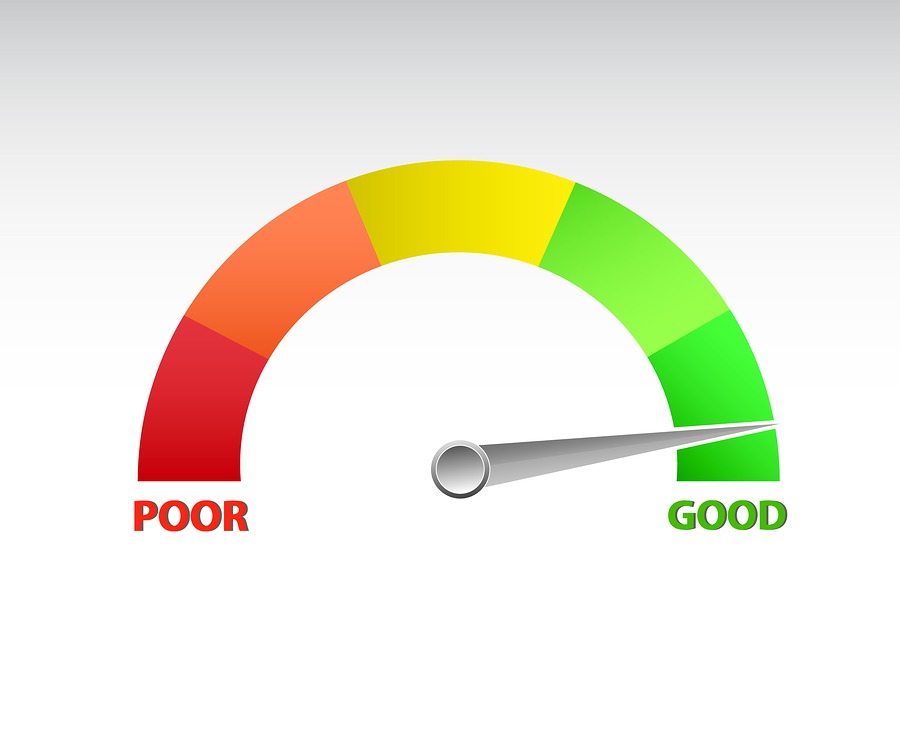
Above, I mentioned the importance of generating qualified leads. A lead who will never buy your products or services isn’t very valuable to your business, right?
One way to evaluate leads is through lead scoring. This is a methodology that gives each lead a score based on how qualified the person or business is.
For instance, let’s say that you’re targeting B2B leads. You could score leads based on social media following: Alexa rank, the lead’s job title, the company’s size, or the business’s total revenue.
When you apply lead scoring, you know which leads deserve the most attention. This is particularly valuable when you’re qualifying leads for your sales team. You don’t want your sales associates to spend time wooing prospects who will never convert into customers.
Additionally, incorporating AI lead generation tools can significantly enhance the effectiveness of your strategies, allowing you to acquire high-quality leads with more precision and efficiency.
9. Start your lead generation strategy on your website’s homepage
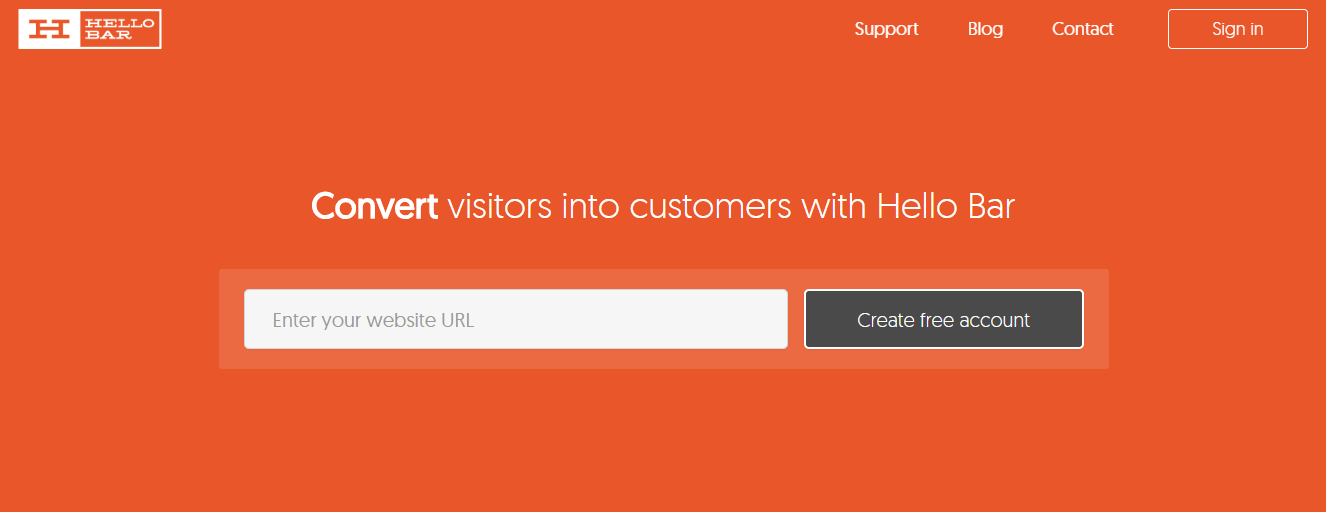
It’s true that many of your website visitors will arrive on interior pages of your website. They might first visit a blog page they found via a Google search, for instance.
However, think about your own habits as an Internet user. Even if you first visit a website’s interior page, what do you do if you find the content intriguing?
I’m guessing that you click on the “Home” button in the navigation menu. You want to start at the beginning.
This is basic human psychology, and it can work to your favor.
Consider adding an exit popup to your website’s homepage. If a visitor attempts to leave from that page, they get an incentive to remain on your website and, more importantly, become a lead.
10. Use webinars as one of your lead generation methods
A webinar is a live or pre-recorded video that teaches your audience something valuable. Generally, marketers start webinars as live events, then publish the recorded versions on their sites or use them as lead magnets.
During a webinar, you’ll teach your audience something valuable, and at the end, you’ll provide a coupon code or other incentive to drive leads.
11. Use Strong Verbs and words
Just as compelling imagery can force visitors to stop and give your content another glance, strong verbs and other words can likewise command visitors’ attention.
Strong verbs are also best for CTAs because they urge your visitors to take action.
Consider these two CTAs:
- Boost your leads with these strategies.
- Get more leads with these strategies.
Which is more powerful and succinct? The first one, right?
“Boost” is a strong verb. It’s specific and compelling.
12. Use the Right Landing Page Conversion Techniques
A landing page is a standalone page on your website that serves a specific purpose. In many cases, it’s designed to convert prospects into leads or leads into customers.
An option email page is an example of a landing page. It has one purpose: Get people to sign up for your email list.
However, landing pages fall flat when they don’t offer a compelling reason to stay.
Experiment with different headlines, graphics, and CTAs. Make sure you provide just enough information to convince someone to convert. Anything more is overkill.
Consider using a tool like Crazy Egg to track movements on your landing pages. If you know where your visitors look and what patterns they follow on the page, you’ll know where to position key elements.
Lead Generation Best Practices
To get the best results from your lead gen efforts, it’s crucial to ensure that your lead generation strategy is in line with the best practices. Whether you’re in for organic lead generation are are investing in paid ads, here are some of the ways you can consider:
- Understand Your Audience: Make sure you know your target audience. Develop detailed buyer personas and conduct market research to ensure you attract the right audience.
- Focus on Quality Over Quantity: Focus only on high-quality leads even if this means narrowing down your audience. This will ensure that your marketing efforts are directed towards those genuinely interested in your products or services.
- Create Valuable Content: Content is key when it comes to lead generation. So create content that provides value, such as in-depth guides, case studies, webinars, and whitepapers. They should also be informative, well-researched, and relevant.
- Diversify Your Marketing Channels: Rather than only focusing on one marketing channel, leverage more channels to drive more leads. These include email marketing, content marketing, SEO, and affiliate marketing.
- Build Trust and Credibility: Social proofs like testimonials and customer reviews can build trust and influence the decisions of your potential leads. It is a good practice to display them on your website and landing pages.
- Promote Your Brand Heavily: To sell your products, the first prerequisite is to let the customer know about your brand. So, heavily promote your brand by marketing it across various social media channels. You can also invest in paid ads and invest in influencer marketing.
- Use Marketing Automation: Implement marketing automation tools that will streamline your lead nurturing process. Use automated workflows to send personalized follow-ups and segment your leads based on their interactions.
Conclusion
Lead generation refers to the process of attracting and guiding prospects with the end goal of turning them into a customer.
Usually, maximizing lead generation requires following a proven marketing strategy. We’ve discussed twelve effective lead generation strategies that you can implement on your site. The best lead generation practices highlighted above will help you attract high-quality leads and ultimately increase revenue.
Tools like Hello Bar can further maximize your lead generation efforts by providing an effective way to capture your visitors’ attention, collect valuable information, and boost conversions.
So sign up today to begin.







